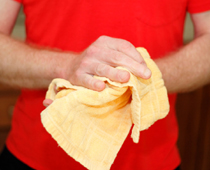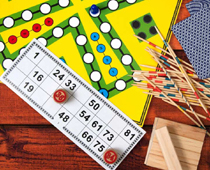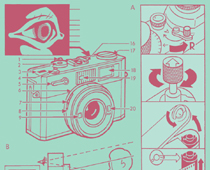
Take the dog for a walk.
Writing Instructions
Get ready for another fun KS2 English quiz all about writing instructions! Instructions are like magic spells that tell you exactly what to do. Whether it's 'Take out your books' or 'Bake a delicious cake,' instructions guide us through tasks. Some are short and sweet, while others are like exciting adventures on paper.
Ever followed a recipe or put together a toy using instructions? Now, it's your turn to master the art of writing instructions. Dive into this quiz and discover how well you can turn everyday tasks into written magic!
Make Learning Exciting - Explore how quizzes helpTo see a larger image, click on the picture.
1 .
Which of the following is NOT an example of an instruction?
Could you wash your hands before you begin.
Don't run.
Fold the paper along the dotted line.
Whisk the cream until thick.
'Whisk', 'fold' and 'don't run' are examples of imperative (bossy) verbs. 'Wash your hands before you begin' would be an instruction.
2 .
3 .
Which of the following set of instructions is in the correct order?
Turn on the tap, soap your hands, rinse your hands, turn off the tap, dry your hands.
Rinse your hands, turn on the tap, turn off the tap, soap your hands, dry your hands.
Soap your hands, turn off the tap, dry your hands, turn on the tap, rinse your hands.
Dry your hands, turn on the tap, soap your hands, rinse your hands, turn off the tap.
Using connectives would improve these instructions: First, turn on the tap. Then soap your hands. Next, rinse your hands...
4 .
5 .
6 .
7 .
8 .
9 .
Which of these connectives should be used in a set of instructions?
Yet, for, because, otherwise.
On the other hand, because, so, secondly.
Therefore, next, however, although.
First, next, then, finally.
Your instructions should be written using 'time connectives', such as 'first', 'next', 'then' and 'finally', to emphasise the correct order for following the steps.
**Unlimited Quizzes Await You! 🚀**
Hey there, quiz champ! 🌟 You've already tackled today's free questions.
Ready for more?
Ready for more?
🔓 Unlock UNLIMITED Quizzes and challenge yourself every day. But that's
not all...
not all...
🔥 As a Subscriber you can join our thrilling "Daily Streak" against other
quizzers. Try to win a coveted spot on our Hall of Fame Page.
quizzers. Try to win a coveted spot on our Hall of Fame Page.
Don't miss out! Join us now and keep the fun rolling. 🎉
**Unlimited Quizzes Await You! 🚀**
Hey there, quiz champ! 🌟 You've already tackled today's free questions. Ready for more?
🔓 Unlock UNLIMITED Quizzes and challenge yourself every day. But that's not all...
🔥 As a Subscriber you can join our thrilling "Daily Streak" against other quizzers. Try to win a coveted spot on our Hall of Fame Page.
Don't miss out! Join us now and keep the fun rolling. 🎉

















